AL QAIDA ORGANIZATION

Al-Qaida training manual Brian Jenkins, a terrorist expert at Rand, told the Washington Post: Al-Qaida “does have a corporate quality about it.” Different individuals specialize in different areas. It operates a bit like a franchise. It consists of central organization that operates a bit like the corporate headquarters, providing leadership, goals and logistics, and a number of cells that are like the franchises that carry out attacks and do the work.
Al-Qaida is lead by an emir (formally Osama bin Laden) who is advised by his shura council which, while bin Laden was alive, included Zawahir and used to include Atef and Zabuda. Below the shura council are four committees: 1) Islamic Study (rulings on religious law); 2) Finance (corporate holding and investments: 3) Military (war training and weapons purchasing); and 4) Media (videos, publishing and websites).
An estimated 50 to 200 senior leaders serve as upper and mid-level managers. Many of these have taken an oath of allegiance to Osama bin Laden and have served as middle men between the leaders and the cells, giving out orders from the leaders and giving back feedback from the cells, and funneling money and arms and setting up communications. Relatively little is known about this layer of Al-Qaida. Some members are involved in attacks. Other are involved training, raising money, research, and communications.
Steven Coll wrote in the Washington Post: “At its birth in 1988, al Qaeda was a poorly equipped summer camp for volunteer soldiers near Khost, Afghanistan. By the summer of 2001, it had a formal headquarters, management committees, a dozen or more training facilities, global recruiting centers, a few thousand sworn members and thousands of other followers. Today al Qaeda is no longer much of an organization, if it can be called one at all. Its headquarters have been destroyed, its leadership is scattered or dead or in jail. Osama bin Laden remains the chairman of the board, increasingly a Donald Trump-like figure -- highly visible, very talkative, preoccupied by multiple wives, but not very effective at running things day-to-day. [Source: Steven Coll, Washington Post, February 2005]
Terry McDermott wrote in The New Yorker: Is Al-Qaida “the sophisticated, global, corporate enterprise so often depicted? Or is it better represented by the “bunch of guys” theory, put forward most persuasively by Marc Sageman, a forensic psychiatrist and former C.I.A. officer? Is it a small core of leaders guiding barely trained men who join and leave the cause for unpredictable reasons?” [Source: Terry McDermott, The New Yorker, September 13, 2010]
Al-Qaida Goals and Motivation
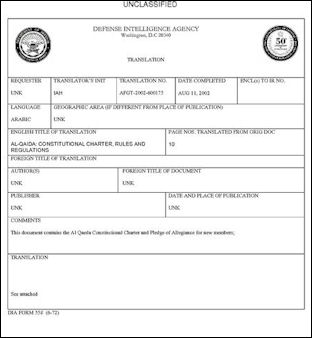
Translation of the Al-Qaida constitution Among Al-Qaida’s goals are: 1) fight a global jihad against the United States and the West; 2) drive the United States from Saudi Arabia; 3) force to Israel to leave contested Palestinian land; 4) establish a pan-Islamic caliphate throughout the world under Islamic law (sharia); 5) radicalize existing Islamic groups: 6) overthrow “corrupt and heretical” Muslim governments; and 7) end the influence of the United States and the West on the Muslim world.
Al-Qaida is not interested in compromising or negotiating. Daniel Benjamin, a terrorist expert in the Clinton administration told the Washington Post, “They want change that is so radical as to defy any concept of negotiations...They are conducting a war, not seeking entrance into the status quo...They believe their violence is justified, and that great goals require dramatic means, and the dramatic means is mass bloodshed.”
Osama bin Laden believed the infidels should be defeated on a grand scale with massive blows. Al-Zawhiri takes more of Maoist approach: that villages everywhere should be encouraged to rise up and fight the infidels. The spiritual leader of Al-Qaida said “we will win because the West loves life and we love death.”
Al-Qaida and other Islamic terrorist groups are motivated by seeking revenge for past injustices against Muslims by the West and colonialist powers and the foreign occupation of the Palestinian territories, Afghanistan and Iraq. They believe they are defending the “unmah” (Muslim community).
The Middle East specialist Michael Doran wrote in Foreign Affairs magazine: Osama bin Laden had “no intention of defeating America. War with the United States was not a goal in and of itself but rather an instrument designed to help his brand of extremist Islam survive and flourish among the believers.” He argued that bin Laden hope the United States would dispatch troops ro Muslim countries, provoking outrage among local people that would lead to their collapse. “Americans, in short, have been drawn into somebody else’s civil war.”
Based on information discovered by carefully analyzing the contents of an Al-Qaida computer he was able to get his hands on, Alan Cullison of the Wall Street Journal wrote in Atlantic Monthly, “Like the early Russian anarchists who wrote some of the most persuasive tracts on the uses of terror, al-Qaeda understood that its attacks would not lead to a quick collapse of the great powers. Rather, its aim was to tempt the powers to strike back in a way that would create sympathy for the terrorists. Al-Qaeda has so far gained little from the ground war in Afghanistan; the conflict in Iraq, closer to the center of the Arab world, is potentially more fruitful. As Arab resentment against the United States spreads, al-Qaeda may look less like a tightly knit terror group and more like a mass movement. And as the group develops synergy in working with other groups branded by the United States as enemies (in Iraq, the Israeli-occupied territories, Kashmir, the Mindanao Peninsula, and Chechnya, to name a few places), one wonders if the United States is indeed playing the role written for it. [Source: Alan Cullison, The Atlantic Monthly, September 2004]
Al-Qaida and Restoring the Caliphate
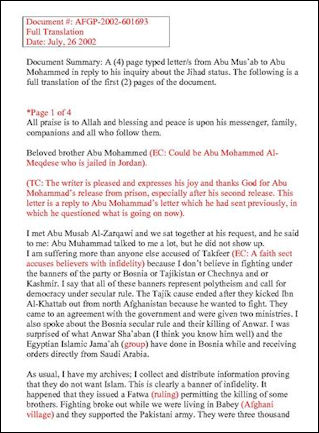
Translation of Status of Jihad Carl Vick wrote in the Washington Post: “Al Qaeda thrived in Afghanistan when the Taliban leader, Mohammad Omar, was called "Commander of the Faithful," a caliphic title. In his book published online shortly after Sept. 11, bin Laden's deputy, Ayman Zawahiri, declared that terror attacks would "be nothing more than disturbing acts, regardless of their magnitude" unless they led to a caliphate in the "heart of the Islamic world." [Source: Carl Vick, Washington Post, January 14, 2006]
The American-led invasion of Iraq provided an opportunity to do just that, Zawahiri apparently wrote in 2005 to Abu Musab Zarqawi, the Jordanian who heads the insurgent group al Qaeda in Iraq. In the version of the letter posted on a U.S. government Web site, Zawahiri said only the presence of foreign occupiers had stirred "the Muslim masses" to action. He advised Zarqawi to use Iraq's Sunni areas as the base for "an Islamic authority or emirate, then develop it and support it until it achieves the level of a caliphate."
The letter, which Bush has paraphrased at length, also calls for attacking Israel "because Israel was established only to challenge any new Islamic entity." "This is something that is characteristic of our time, to reestablish an ideological empire," said Serif Mardin, a leading Turkish scholar on political Islam. "A sweet caliph of ancient times is overwhelmed by this modern military idea. I mean, the caliph is supposed to be a nice guy.”
Communications Between Al-Qaida Leadership
Letters sent from and to Ayman al-Zawahiri in 1999 contain coded language typical of many files on found an Al-Qaida computer. They also show the degree to which al-Qaeda operatives abroad were being exposed and detained because of their efforts. In the first of the following two letters much of the code remains mysterious. A message from al-Zawahiri to Yemen Cell Members, dated February 1, 1999, read: “I would like to clarify the following with relation to the birthday [probably an unspecified attack]: a) Don't think of showering as it may harm your health. b) We can't make a hotel reservation for you, but they usually don't mind making reservations for guests. Those who wish to make a reservation should go to Quwedar [a famous pastry shop in Cairo]. c) I suggest that each of you takes a recipient to Quwedar to buy sweets, then make the hotel reservation. It is easy. After you check in, walk to Nur. After you attend the birthday go from Quwedar to Bushra St., where you should buy movie tickets to the Za'bolla movie theater. d) The birthday will be in the third month. How do you want to celebrate it in the seventh? Do you want us to change the boy's birth date? There are guests awaiting the real date to get back to their work. e) I don't have any gravel [probably ammunition or bomb-making material]. [Source: Alan Cullison, The Atlantic Monthly, September 2004, from files found on a computer used by Al-Qaida leader Ayman al-Zawahiri]

Translation of some al-Qaida documents A message from Ayman al-Zawahiri found in a folder labeled Incoming Mail — From Yemen
and dated May 13, 1999 read: Dear brother Salah al-Din...Forty of the contractor's [bin Laden's] friends here were taken by surprise by malaria [arrested] a few days ago, following the telegram they sent, which was similar to Salah al-Din's telegrams [that is, it used the same code]. The majority of them are from here [Yemen], and two are from the contractor's country [Saudi Arabia]. We heard that al-Asmar had a sudden illness and went to the hospital [prison]. He will have a session with the doctors [lawyers] early next month to see if he can be treated there, or if he should be sent for treatment in his country [probably Egypt, where jihadis were routinely tortured and hanged].
Osman called some days ago. He is fine but in intensive care [being monitored by the police]. When his situation improves he will call. He is considering looking for work with Salah al-Din [in Afghanistan], as opportunities are scarce where he is, but his health condition is the obstacle. Though troubled by arrests abroad, the jihadis had time and safety for contemplation in Afghanistan. In 1999 al-Zawahiri undertook a top-secret program to develop chemical and biological weapons, a program he and others referred to on the computer as the "Yogurt" project. Though fearsome in its intent, the program had a proposed start-up budget of only $2,000 to $4,000. Fluent in English and French, al-Zawahiri began by studying foreign medical journals and provided summaries in Arabic for Muhammad Atef, including the one that follows.
A message to Muhammad Atef from al-Zawahiri, dated April 15, 1999, read: “I have read the majority of the book [an unnamed volume, probably on biological and chemical weapons]... [It] is undoubtedly useful. It emphasizes a number of important facts, such as: a) The enemy started thinking about these weapons before WWI. Despite their extreme danger, we only became aware of them when the enemy drew our attention to them by repeatedly expressing concerns that they can be produced simply with easily available materials — b) The destructive power of these weapons is no less than that of nuclear weapons. c) A germ attack is often detected days after it occurs, which raises the number of victims. d) Defense against such weapons is very difficult, particularly if large quantities are used.
“I would like to emphasize what we previously discussed — that looking for a specialist is the fastest, safest, and cheapest way [to embark on a biological- and chemical-weapons program]. Simultaneously, we should conduct a search on our own...Along these lines, the book guided me to a number of references that I am attaching. Perhaps you can find someone to obtain them.” The letter goes on to cite mid-twentieth-century articles from, among other sources, Science, The Journal of Immunology, and The New England Journal of Medicine, and lists the names of such books as Tomorrow's Weapons (1964), Peace or Pestilence (1949), and Chemical Warfare (1921).
Cullison wrote: Al-Zawahiri and Atef appear to have settled on the development of a chemical weapon as the most feasible option available to them. Their exchanges on the computer show that they hired Medhat Mursi al-Sayed, an expert to whom they refer as Abu Khabab, to assist them. They also drew up rudimentary architectural plans for their laboratory and devised a scheme to create a charitable foundation to serve as a front for the operation. According to other sources, Abu Khabab gassed some stray dogs at a testing field in eastern Afghanistan, but there is no indication that al-Qaeda ever developed a chemical weapon it could deploy.”

Captured documents in Zawar Kili
Al-Qaida Office Life
Alan Cullison wrote in The Atlantic Monthly: “Although al-Qaeda has been mythologized as a disciplined and sophisticated foe, united by a deadly commonality of purpose and by the wealth of its leader, internal correspondence on the computer reveals a somewhat different picture. In the years leading up to 9/11 the group was a loose confluence of organizations whose goals did not meld easily, as was seen in both tactical discussions (for example, should they attack Arab governments, America, or Israel) and day-to-day office operations. At the most basic — that is to say, human — level the work relationships of al-Qaeda's key players were characterized by the same sort of bickering and gossiping and griping about money that one finds in offices everywhere. [Source: Alan Cullison, The Atlantic Monthly, September 2004, from files found on a computer used by Al-Qaida leader Ayman al-Zawahiri]
The following letter Ayman al-Zawahiri, dated February 11, 1999, is similar in tone and substance to much of what was found on the computer: “Noble brother Ezzat” Following are my comments on the summary accounting I received: “With all due respect, this is not an accounting. It's a summary accounting. For example, you didn't write any dates, and many of the items are vague. The analysis of the summary shows the following: 1- You received a total of $22,301. Of course, you didn't mention the period over which this sum was received. Our activities only benefited from a negligible portion of the money. This means that you received and distributed the money as you please. 2- Salaries amounted to $10,085 — 45 percent of the money. I had told you in my fax — that we've been receiving only half salaries for five months. What is your reaction or response to this? 3- Loans amounted to $2,190. Why did you give out loans? Didn't I give clear orders to Muhammad Saleh to refer any loan requests to me? We have already had long discussions on this topic. 4- Why have guesthouse expenses amounted to $1,573 when only Yunis is there, and he can be accommodated without the need for a guesthouse. 5- Why did you buy a new fax for $470? Where are the two old faxes? Did you get permission before buying a new fax under such circumstances? 6- Please explain the cell-phone invoice amounting to $756 (2,800 riyals) when you have mentioned communication expenses of $300. 7- Why are you renovating the computer? Have I been informed of this? 8- General expenses you mentioned amounted to $235. Can you explain what you mean?”
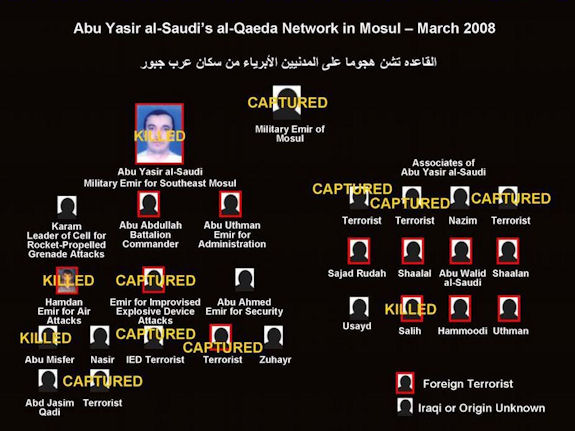
Al-Qaida In Iraq Mosul Network 2008
The reply to al-Zawahiri, in the folder “Incoming Mail — From Yemen,” dated February 17, 1999, read: “Kind brother Nur al-Din [al-Zawahiri]: “We don't have any guesthouses. We have bachelor houses, and the offices are there too. We called it a guesthouse hypothetically, and we don't have any bachelors except Basil and Youssef. And Abd al-Kareem lives at his work place. If I buy a fax and we have two old ones, that would be wanton or mad. Communication expenses were $300 before we started using the mobile phone — and all these calls were to discuss the crises of Ashraf and Dawoud and Kareem and Ali and Ali Misarra and Abu Basel and others, in compliance with the orders.
“Renovating our computer doesn't mean buying a new one but making sure that adjustments are made to suit Abdullah's [bin Laden's] work. There were many technical problems with the computer. These matters do not need approval.There are articles for purchase that are difficult to keep track of, so we have put them under the title of general expenses — The first step for me to implement in taking your advice is to resign from any relationship whatsoever between me and your Emirate. Consider me a political refugee.”
Al-Qaida Training Camps
Al-Qaida and Taliban training camps in Taliban-controlled Afghanistan were used to train fighters for battles against the Northern Alliances and train insurgents for struggles in Kashmir, Chechnya. Uzbekistan, Eritrea, Yemen, Saudi Arabia, Algeria, Tajikistan, Egypt, Bosnia, west China, Indonesia, Malaysia, Macedonia, Kosova and the Philippines. A relatively small percentage of people that passed through the camps were trained as terrorists for “martyr missions.”
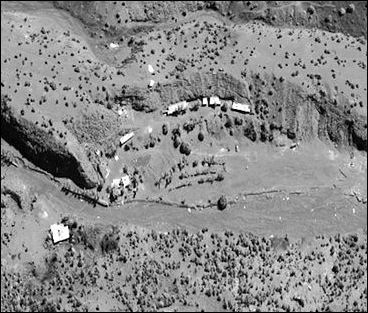
Zhawar Kili Al-Badr Camp 4 Al-Qaida had roughly 40 training camps scattered throughout Afghanistan. The Taliban ran about 15. The CIA estimated 15,000 to 30,000 Muslims from 50 countries passed through the camps. Other sources have estimated that 70,000 passed through them. The main training camps could accommodate about 1,500 people at one time. Within them were individual camps that specialized in certain disciplines such as explosives and the use of grenades and light weapons. Courses lastsed from two weeks to several months.
One French terrorism expert told Newsweek, “The leaders in these camps separate out the strong from the weak, Those who are strong go on to fight and perhaps became leaders.” The weak were usually told to go home.
Al Farooq was one of the largest camps. There was two basic kinds of training courses there: Al-Qaida training to attack civilians; and military training to fight the Northern Alliance. Osama bin Laden gave lectures at Al Farooq. Describing one of his lectures there the American Taliban John Lindh told The New Yorker, “To tell you the truth he was really boring. I was so tired. The training was grueling. I thought he seemed sick. Most of the speakers stood up when they spoke, but he sat down, and he talked in this really soft voice about the history of Afghanistan, and how everyone had invaded it starting with the Greeks. I listened to the beginning, but it wasn’t very interesting. So I fell asleep.” Lindh said met once with bin Laden. He said he remembers little from the encounter other than that bin Laden drank a lot of water and said, “I’m glad you’re here.”
There may camps today in places such as Pakistan and the Philippines. Some argue that such camps are not really necessary since much of the information that was forwarded at the camps is now easy to access on jihadist websites.
Trainees at Al-Qaida Training Camps

Zhawar Kili Al-Badr Camp 3 Video tapes from the camps showed trainees practicing urban assault, throwing grenades into old cars, and practicing their marksmanship. Trainees were taught how to shoot properly and encode secret messages. In some cases they shot at captured stray dogs. Children of families of trainees were shown holding Kalashnikovs and making anti-Western pronouncements.
One trainee told the Wall Street Journal, “In Afghanistan, everything changes. Your mind opens up. You begin to think globally.” But he also said, “The food was always bad. People got sick. People were always tired.” He said he was got sick from drinking the water and two men he knew were excuted after the were discovered having homosexual relations.
Some trainees that showed particular promise and perhaps fit a certain profile were asked if they wanted to take part in “martyrdom operations” — suicide missions. The American Taliban John Lindh said he was recruited for such a mission by Al-Qaida operative Ubu Mohammed al-Masri. “He asked me whether I’d like to a martyrdom operation,” Lindh told investigators. “I said, “No I’m not interested in that.” He said, “Would you be interested in a U.S. or Israeli target?” I said, “I’d come to Afghanistan to fight against the Northern Alliance. I’m not interested in fighting against other countries.” Then “The Egyptian said, “Whatever you do, do not tell other trainees about this private conversation.”
The graduates were expected to return to their home countries and start their own camps and establish cells that carried out Al-Qaida activities. Many put in stints fighting in Kashmir for Pakistan. Richard Reid (the Shoe Bomber) and Zacarias Moussaoui (the so called “20th hijacker”) trained at Khalden training camp.
Al-Qaida Cells
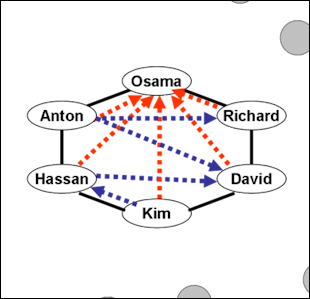
T-Cell Terrorist and jihadist cells are typically divided into four units: intelligence, logistics, security and execution. The cells are usually composed of four or five members who plan, support and carry out terrorist attacks. The degrees of support varies from cell to cell and group to group. Some groups affiliated with Al-Qaida are believed to carry out plans hatched by Al-Qaida leaders. Others carry out their attacks with ideological, logistical and/or financial support from Al-Qaida.
Cells operate independently of one another. Sometimes an Al-Qaida leader of logistics coordinates the activities of the cells for a single attack or series of attacks. They are often engaged in reconnaissance, planning and logistical support as well as actually carrying out attacks. Many cells may remain inactive for years and suddenly be called to action. These are called sleeper cells. They are in reality quite rare just because sometimes they are expected to stay quite for years and it is difficult to maintain morale and determination under these circumstances.
Secrecy and security are one of the main reasons the cells are kept small. Al-Qaida cells are believed to be divided into planning and execution cells, sometimes with overlapping members. Communication with other cells, handlers and Al-Qaida higher-ups is done secretly, perhaps with dead drops. Sympathizers are sometimes recruited for logistical tasks such driving and purchasing vehicles.
Estimates of the numbers of Al-Qaida cells worldwide range from a few hundred to a few thousand.
Al-Qaida Cell Members
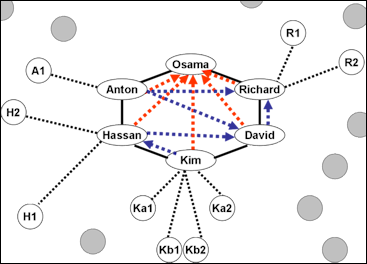
T-Cell Sleeper cells are made of members who have ordinary jobs and come alive when they are called into action. These men work as farmers, fishermen and grocers or are students are sometimes involved in religious or charity activities before being called into action.
Cell members were taught to lie low, stay away from mosques and avoid anything that could draw attention to themselves. The members often used aliases and possesses fake documents.
Ideal cell members are dedicated Muslim extremists who are comfortable in the West and Western ways and are adept at using the Internet and other modern communication. Many are highly educated and speak several languages, including English. They differ from the traditional suicide bomber who was usually uneducated and had little future.
Cells have traditionally found the going particularly good in Europe, where the could move freely from country to country with student visas. Before the attack on the World Trade Center in New York on September 11, 2001 operatives were recruited from mosques around te world and brought to Afghanistan for training. They were then sent around the globe to start new cells or help existing ones.
Jerold Posy, a terrorism expert at George Washington University, told Newsweek that a Tanzanian terrorist he interviewed “found a sense of meaning and community in the mosque. In a rather vague...romantic, heroic way, he became inspired to the join the struggle, the jihad, and help the Muslim victims.” He went to the training camps in Afghanistan, finished his training and went home. After many months he was contacted and recruited to participate in the bombing of the Tanzanian embassy.”
See Separate Article AL-QAIDA MEMBERS factsanddetails.com
Franchises and Freelancers
Groups like the Moro Islamic Liberation Army and Abu Satyyaf in the Philippines, Salafia Jihadia in Morocco and Algeria. Jemaah Islamiah in Indonesia, Laskar-i-Taiba in Pakistan and India and the Abu Hafs al-Masri Brigade and the Islamic Great Eastern Raider Front in Turkey has all been described as Al-Qaida franchises. In many cases their members have been trained at Al-Qaida camps and have received logistical support from Al-Qaida. They have been provided with communications, tips on making bombs and money but largely conceive and carry out their attack themselves.
As time has passed these local groups in many cases have become stronger, richer, better organized and more mature. The anti-American themes has proved to be a unifying force that Islamic groups all over the world have been able to embrace. In some ways Al-Qaida acts as a foundation giving out grants based on the merits of the project. Al-Qaida also offers tips on raising to money through drugs and extortion.

In addition to cells there are freelancers. These include the thousands of militants who passed through the training camps and skilled or technically proficient people who are hired like mercenaries for special services. In some cases freelancers have no connection with Al-Qaida other than being inspired by their tapes, websites, images and rhetoric.
Al-Qaida and Money
It is unclear how much money Al-Qaida has access to and where this money comes from and how it is spent but many experts say Al-Qaida needs much less money than many people think its does. The cost of the attack on the World Trade Center in New York on September 11, 2001 probably ran in the hundreds of thousands of dollars not millions. Some operatives are only paid $500 a month. One report estimated that the average price for a major attack was $400,000 to $500,000 spent over two years. Many think the costs are often less than that.
Much of Al-Qaida’s financing is believed to have been done out of Dubai with money funneled through Islamic charities, cash messengers or bank accounts to Al-Qaida-controlled accounts in London, Hong Kong, the United Arab Emirates and offshore accounts.
Before the attack on the World Trade Center in New York on September 11, 2001, Al-Qaida funding was controlled by a central finance committee and funneled illegally through banks, charities and messengers who delivered cash. Since the attack the movement of money has become more difficult. Much of it believed to be done in cash.
A CIA report estimated that Al-Qaida spent abut $30 million a year to sustain its activities before September 11th and most of the money came from donations. Little of it s thought to have come from Osama bin Laden personal wealth. Osama bin Laden obtained an $80,000 satellite phone from Germany and then got rid of it after he discovered it was monitored by U.S. intelligence. Al-Qaida purchased a Saber-40 jet plane for $210,000. The jet was neglected and crashed in Khartoum.
Sources of Al-Qaida Money
Much of Al-Qaida’s money is believed to have originated from Osama bin Laden’s personal fortune, Saudi merchants and Gulf businessmen and collections taken at mosques and investments made with money from these sources.
Al-Qaida is believed to get much of its money from wealthy Muslims who hate America and support Al-Qaida’s goals. Al-Qaida documents seized in Bosnia revealed that in late 1900s and early 2000s Osama bin Laden received donations from some of Saudi Arabia’s wealthiest men, three billionaire bankers, two industrialists and a former government minister.
At one time Al-Qaida had controlling interests in five companies: 1) Wadi al Aqiq (a holding company); 2) Ladin International (import-export, investment); 3) Taba Investments (currency trading, investments); 4) A Hura Construction (built bridges and roads); and 4) Al Themar Al Mubaraka ( an agriculture company though which weapons and explosives were moved). Some of these were set up by Osama bin Laden when he was in Sudan and were quite profitable due to bin Laden’s connections with the Sudan government and a lack of competition.
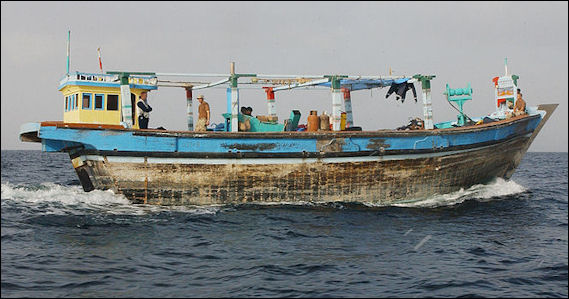
boat used by Al-Qaida smugglers found with drugs
Money has been raised for Al-Qaida through charities, mosques, foundations, fund-raisers and businesses. Some fund-raising strategies date back the mujahedden era in Afghanistan in the 1980s. According to one report “Islamist organizations — many of them linked to bin Laden — can draw on funds estimated at between $5 billion and $16 billion. Much of the money is under false names and in accounts too small to track. Wire transfers are in small amounts. A lot transactions are done in cash, gold or diamonds.
Phillip Cohen, a U.S. State Department South Asia specialist told the Washington Post, “The money comes from a lot of countries often under the pretext of helping freedom fighters in Palestine and Kashmir...and some of it goes to bin Laden. He’s sort from like the Ford Foundations for terrorists.
There are reports that Al-Qaida has received millions of dollars from Iraq and that Osama bin Laden has met Saddam Hussein. These reports have largely been discredited. Al-Qaida is also believed to have received indirect support from Iran and Pakistan and other nations.
Assets linked to Osama bin Laden and Al-Qaida were frozen after the attacks on the embassies in Africa in 1998 and after the attack on the World Trade Center in New York on September 11, 2001. Among the Al-Qaida-linked enterprises that had their assets frozen were Al Barakaat, a Somalia-based money transaction service, and Al Taqwa, a financial management company.
Saudi Royal Family Money and Pakistani Intelligence Links to Al-Qaida
Saudi money made Al-Qaida possible. Even though Al-Qaida said it was committed to the overthrow of the Saudi royal family a lot of Saudi royal family money had found its way to Al-Qaida. Simple mathematics partly explains why this is so. There are literally thousands of royal family members and its is is not unlikely that a few of them hate the West so much they are willing to donate money to Al-Qaida.
According to the book Why America Slept by Gerald Posner one-time Al-Qaida No. 3 Abu Zubaydah gave investigators evidence that that Prince Ahmed bin Salman bin Abdul Aziz was a major source of Al-Qaida money. Aziz is the Westernized nephew of King Fahd and a well-known racehorse owner. His horse War Emblem won the Kentucky Derby in 2002. [Source:Johanna McGeary Time, September 8, 2003; “Why America Slept” by Gerald Posner (Random House, 2003)]
Johanna McGeary wrote in Time: Posner wrote that Zubaydah, said the Saudi connection ran through Prince Turki al-Faisal bin Abdul Aziz, the kingdom's longtime intelligence chief. Zubaydah said bin Laden "personally" told him of a 1991 meeting at which Turki agreed to let bin Laden leave Saudi Arabia and to provide him with secret funds as long as al-Qaeda refrained from promoting jihad in the kingdom. The Pakistani contact, high-ranking air force officer Mushaf Ali Mir, entered the equation, Zubaydah said, at a 1996 meeting in Pakistan also attended by Zubaydah. Bin Laden struck a deal with Mir, then in the military but tied closely to Islamists in Pakistan's Inter-Services Intelligence (ISI), to get protection, arms and supplies for al-Qaeda. Zubaydah told interrogators bin Laden said the arrangement was "blessed by the Saudis."
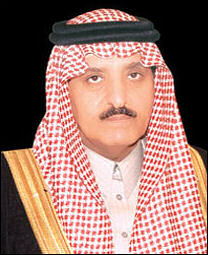
Prince Ahmed bin Salman
bin Abdul Aziz “Zubaydah said he attended a third meeting in Kandahar in 1998 with Turki, senior ISI agents and Taliban officials. There Turki promised, writes Posner, that "more Saudi aid would flow to the Taliban, and the Saudis would never ask for bin Laden's extradition, so long as al-Qaeda kept its long-standing promise to direct fundamentalism away from the kingdom." In Posner's stark judgment, the Saudis "effectively had [bin Laden] on their payroll since the start of the decade." Zubaydah told the interrogators that the Saudis regularly sent the funds through three royal-prince intermediaries he named.
“The last eight paragraphs of the book set up a final startling development. Those three Saudi princes all perished within days of one another. On July 22, 2002, Prince Ahmed was felled by a heart attack at age 43. One day later Prince Sultan bin Faisal bin Turki al-Saud, 41, was killed in what was called a high-speed car accident. The last member of the trio, Prince Fahd bin Turki bin Saud al-Kabir, officially "died of thirst" while traveling east of Riyadh one week later. And seven months after that, Mushaf Ali Mir, by then Pakistan's Air Marshal, perished in a plane crash in clear weather over the unruly North-West Frontier province, along with his wife and closest confidants.
Posner, was shocked when Zubaydah claimed that "9/11 changed nothing" about the clandestine marriage of terrorism and Saudi and Pakistani interests, "because both Prince Ahmed and Mir knew that an attack was scheduled for American soil on that day." They couldn't stop it or warn the U.S. in advance, Zubaydah said, because they didn't know what or where the attack would be. And they couldn't turn on bin Laden afterward because he could expose their prior knowledge. Both capitals swiftly assured Washington that "they had thoroughly investigated the claims and they were false and malicious." The Bush Administration, writes Posner, decided that "creating an international incident and straining relations with those regional allies when they were critical to the war in Afghanistan and the buildup for possible war with Iraq, was out of the question."
The book appears to be the first description of a repeated, explicit quid pro quo between bin Laden and a Saudi official. Posner told TIME he got the details of Zubaydah's interrogation and revelations from a U.S. official outside the CIA at a "very senior Executive Branch level" whose name we would probably know if he told it to us. He did not. The second source, Posner said, was from the CIA, and he gave what Posner viewed as general confirmation of the story but did not repeat the details.” If the claims are indeed true were Turki and Mir “cutting deals with bin Laden, were they acting at the behest of their governments or on their own? Posner avoids any direct statement, but the book implies that they were doing official, if covert, business. In the past, Turki has admitted — to TIME in November 2001, among others — attending meetings in '96 and '98 but insisted they were efforts to persuade Sudan and Afghanistan to hand over bin Laden. The case against Pakistan is cloudier. It is well known that Islamist elements in the ISI were assisting the Taliban under the government of Nawaz Sharif. But even if Mir dealt with bin Laden, he could have been operating outside official channels.
Charities That Potentially Support Al-Qaida
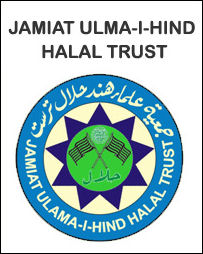
a charity with alleged
ties to jihadists Al-Qaida is said to received a great deal of money from “charities” that fund Muslim extremism. Saudi Arabia is one main contributors to these charities. According to some allegations money from zakat (the 2.5 percent religious income taxes required by all Muslims) and money collected in mosques to help Palestinians, Kashmiris and Chechens have ended up in charities that allegedly funnel the money to Al-Qaida or Muslim extremist groups sympathetic to Al-Qaida.
The accounts of charities such as Somali-based Al Barakat were frozen after September 11th. This move created problems in places that rely on the charities for things like medicine and food. With Al Barakat out of business many Somalis outside the country couldn’t wire money to their poor families in Somalia.
There were reports that money from the Saudi-based al Haramain Islamic Foundation and the Wafa Humanitarian Organization was routed to Hamburg where it was used to buy luxury cars that were then sold in Saudi Arabia, with the laundered money said to have been routed to terrorist organizations such as Al-Qaida. Some charities were accused of providing safe houses, forged documents, false identities and even weapons and bomb-making materials to jihadist groups. Among the charities accursed of doing this were the Pakistan-based World Muslim League.
Al-Qaida, Diamond, Gold, Drugs and Crime
After the attack on the World Trade Center in New York on September 11, 2001, Al-Qaida is believed to have transferred much of its wealth into gold, diamonds and cash which can not be tracked and controlled or frozen like bank accounts. There were reports that Al-Qaida sent a huge shipment of gold from Afghanistan to Sudan via the United Arab Emirates and Iran by boat and plane. There have also been reports of Al-Qaida members attempting to buy sophisticated weapons such as missiles from arms traders that accept diamonds. Some experts think the reports of diamond and gold trading are unfounded or done on a small scale. They say there are much simpler ways to transfer funds such as through the Paypal Internet banking system.
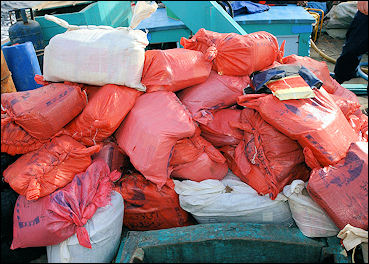
two tons of drugs found on a boat used by Al-Qaida
According to diamond dealers interviewed by the Washington Post Al-Qaida earned large profits trading in so called “blood diamonds” from Angola, Liberia, Sierra Leone and Congo in Africa. According to an FBI investigation top Al-Qaida operatives reportedly bought diamonds in West Africa before the September 11th attacks and dealt directly with the Liberian warlord-president Charles Taylor. The investigation revealed that beginning in1998 that the six Al-Qaida members used hotels and safe houses in the Liberian capital of Monrovia
Al-Qaida has earned money through criminal activities such as credit card fraud, bank robberies, skimming profits off drug sales, reselling baby formula, illegally redeeming large quantities of grocery coupons, collecting fraudulent welfare checks, selling unlicenced T-shirts and counterfeit designer clothes and stolen cigarettes, and other crimes. In some places local Al-Qaida-affiliated groups make money through credit card fraud, petty crimes and bank robberies. The selling of fake consumer goods has proved to be a lucrative means or raising money. Al-Qaida has been linked to the sale of fake Nike shoes, Sony stereos and Calvin Klein jeans. According to report issued by Interpol in 2003 “intellectual property crime is becoming the preferred methods of funding for a number of terrorist groups.
Al-Qaida is believed to have made millions by short selling futures on airline and insurance stock that crashed after the attack on the World Trade Center in New York on September 11, 2001. It has also been connected with a travel agency involved in human trafficking that specialized in moving people from Latin America across the Mexican border into the United States.
Al-Qaida is believed to have been active in the illegal drug trade, especially in Afghanistan and Pakistan. It is believed that at one the group may have earned as much $1 billion a year from the drug trade. Al-Qaida was often paid in gold for helping to move Afghanistan opium and heroin through Central Asia with the help of Muslim extremist groups there.
There are reports that Osama bin Laden financed an efforts to develop a super heroin called the “Tears of Allah” that would cause widespread addiction in the West and kill scores of people. Ultimately it proved to be “a chemical dud.”
In December 2003, the U.S. Navy seized a boat carrying 1,700 kilograms of hashish and suggested it was part of an Al-Qaida drug smuggling operation based on the fact the boat was seized on a known Al-Qaida smuggling route. The Navy said there were clear ioes between the smuggling operation and Al-Qaida but did not provide details.
How Local Cells use Money

Opium found in alleged Taliban-Al-Qaida
safe house in Helmand
Craig Whitlock wrote in the Washington Post: “Authorities said it is often impossible to monitor fundraising by such cells because they generally keep so little in the bank. Instead of receiving wire transfers or making large deposits that would trigger automatic alerts, they move cash in person and are discreet about how they spend it...Law enforcement officials in London said al-Qaeda cells are trained to plot and live on the cheap. Operatives lead ascetic lives, often keeping their day jobs or depending on their families to cover expenses. Above all, they are taught to build bombs that are lethal but crude and inexpensive. Almost every terrorist plot in Europe in recent years has followed a simple formula: homemade explosives stuffed into backpacks, shoes, suitcases or car trunks. [Source: Craig Whitlock, Washington Post, August 24, 2008]
"The groups operating in Europe don't need a lot of money. The cost of operations is very low," Jean-Louis Bruguière, a former senior anti-terrorism judge in France who now works as an adviser to the European Union on terrorism financing, told the Washington Post. "But they are very skilled at obtaining money and using criminal systems to do it. They can collect thousands and thousands of dollars or euros in a few weeks. It is beyond our control."
“Before Sept. 11, 2001,” Whitlock wrote, “al-Qaeda and its affiliates rarely used the banking system in a manner that might arouse suspicion, officials and experts said. In response to the new anti-terrorism financing laws, the network has became even more cautious, relying on couriers to carry money across borders when necessary, authorities said. Dennis M. Lormel, a former head of the FBI's Terrorist Financing Operations, said that Al-Qaida responded quickly after September 11th. Its cells in Europe and elsewhere now raise money on their own instead of relying on financial transfers from external sources that could be tracked by law enforcement officials. "Clearly, when you're dealing with groups that are self-funded, you're dealing with a different set of circumstances from when they put these laws in place," Lormel, now a senior vice president at Corporate Risk International, told the Washington Post. "The bad guys, after a while, they realize what we're doing, so they're going to alter how they do business," he added. "Obviously, you're not going to stop them from getting money, and they're going to be able to adapt."
See Separate Article Al-Qaeda “Masters Terrorism On the Cheap" factsanddetails.com
Inventive Fundraising
Craig Whitlock wrote in the Washington Post: “Al-Qaeda's self-financing cells in Europe have become increasingly creative in their fundraising methods, officials said. After the July 2005 London transit bombings, police knocked on the door of a sheep farmer in Scotland to inquire about a livestock deal gone sour. The farmer, Blair Duffton, confirmed that he had lost more than $200,000 when he sent several truckloads of sheep to a slaughterhouse in Leeds, England, but never received payment. [Source: Craig Whitlock, Washington Post, August 24, 2008]
“The slaughterhouse specialized in halal meat, or food prepared according to Islamic law. Detectives informed Duffton that the person who had stiffed him for the sheep was an associate of Shehzad Tanweer, one of three bombers who had lived in Leeds. "I almost went bankrupt," Duffton recalled in a telephone interview. "I couldn't believe it when they told me that this might have been connected to terrorism."
“In Germany, three Arab men were convicted in December 2007 on charges of attempting to raise $6.3 million for al-Qaeda by faking a death to collect on nine life insurance policies. In Switzerland and Spain in 2006, authorities broke up a cell that had stolen $2 million worth of computers, cars and home furnishings. Police said the group sold the goods on the black market and had couriers carry the cash, in $2,000 increments, to an al-Qaeda-affiliated network in Algeria.
“In Britain, an al-Qaeda operative, Omar Khyam, was caught on a surveillance tape urging some of the July 2005 London suicide bombers to defraud banks and hardware stores by defaulting on loans of less than $25,000. Khyam said the goal was not just to raise money for operations but to "rip the country apart economically, as well," according to court testimony in April at the trial of the three men accused of providing support to the bombers. Acting on Khyam's advice, one of the bombers obtained and then defaulted on a $20,000 loan from HSBC Bank. Another secured a $14,000 line of credit from a building supply company. Given the small scale of such transactions, banks or police would have had little reason to suspect the involvement of terrorists, officials said. "That's the cleverness of these schemes -- to keep it under the radar," said Stephen Swain, former head of Scotland Yard's international counterterrorism unit. "By doing this, they can raise significant amounts of money, fairly quickly, and there's no real way to detect it."
Cash-Strapped Al-Qaeda Encourages Kidnapping as a Way to Make Money
AFP reported: “Documents from Osama bin Laden's compound show Al-Qaeda is focusing more on kidnapping to raise funds as the group faces a cash shortage, US officials said. Although kidnapping was not an entirely new tactic by the network's core leadership, material retrieved from bin Laden's residence in Pakistan confirms that it was "discussed further as a way of dealing with funding woes," a US official told AFP. [Source: AFP, June 20, 2011]
"It’s clear that Al-Qaeda in Pakistan has resorted to kidnapping ransom payments in recent years as one way of raising funds for its terrorist operations," said a second US official. Al-Qaeda's affiliates have long carried out kidnapping to fund attacks, particularly its north African wing, Al-Qaeda in the Islamic Maghreb, or AQIM. At the time of article The group was holding four French hostages since September who were abducted in northern Niger as well as an Italian kidnapped in southern Algeria in February.
Image Sources: Wikimedia Commons except Prince Ahmed bin Salman bin Abdul Aziz Riyadh City website
Text Sources: New York Times, Washington Post, Los Angeles Times, Times of London, The Guardian, National Geographic, The New Yorker, Time, Newsweek, Reuters, AP, AFP, Wall Street Journal, The Atlantic Monthly, The Economist, Global Viewpoint (Christian Science Monitor), Foreign Policy, Wikipedia, BBC, CNN, NBC News, Fox News and various books and other publications.
Last updated July 2012
